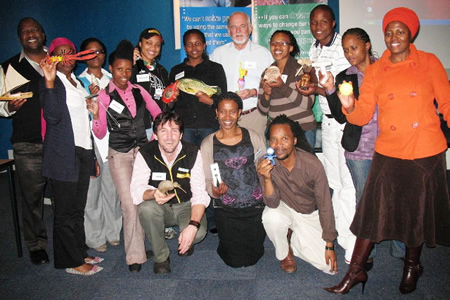| 46% of getS.E.T.go! readers think that the most important benefit of South Africa’s recent participation in the Shanghai Expo, will be the raising of our country’s science & technology profile on the global stage. | |
| 38% opted for “sharing of international best practices in maths & science education”; and 15% for “building an international network of contacts”. |
Almost 21 000 learners from around South Africa and SADC countries participated in the Science Olympiad this year.

As “agents of change” science centres need to share their best practice with others - and now they are learning to do it with flair.
Two workshops on writing and presenting conference papers were held for the science centre community earlier this year to help science centre staff share their experiences with colleagues more effectively.
The workshops – one by Dr Tony Lelliott in Johannesburg and the other by Professor Mike Bruton in Cape Town – are part of SAASTA’s Science Centre Capacity Building (SCCB) project, which focuses on skills development in South African science centres. The SCCB project is part of a larger Department of Science and Technology plan to establish an extended network of well-functioning science centres around the country.
“The events were attended by 50 people from 23 different centres,” says organiser Thandamanzi Mdluli of SAASTA’s Science Awareness Platform.
An exercise in one of the workshops, Dr Lelliott encouraged the participants to think about how to carry out a small-scale research or evaluation project in their science centre and then report back on it.
This was a very timely intervention in light of the Southern African Association of Science and Technology Centres (SAASTEC) conference that took place at the end of November and the sixth Science Centre World Congress coming up next year. Seventeen out of the 39 workshop participants submitted abstracts for the SAASTEC Conference, and all were accepted.

At Mike Bruton's workshop at the former MTN ScienCentre in Cape Town in July 2010, each participant had to choose a so-called “thingie” on which they had to talk for two minutes without hesitation or repetition.
